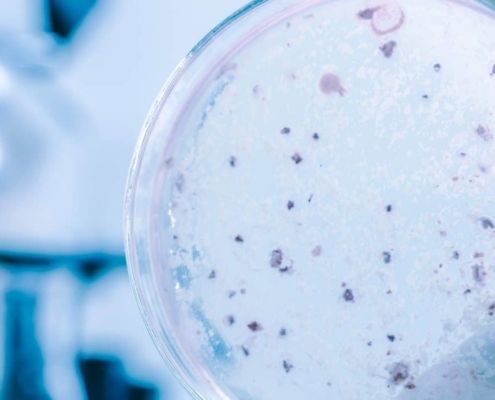
What’s Legionella
Tanksalot specialises in Legionella control and prevention
Tanksalot can conduct a Legionella Risk Assessment, which will identify the level of risk within your premises and suggest the right course of action.
All our water samples are analysed in an INAB accredited Laboratory.
The following content provides a general overview of Legionnaires’ disease and is aimed at employers and persons who have control of a place of work, including hospitals and educational institutions. It will also be of interest to designers, suppliers, manufacturers and installers of water based systems, plant and equipment.
(Source: HSA)

What is Legionnaires’ disease?
Legionnaires’ disease is a potentially fatal form of pneumonia. People may get infected when they breathe in tiny water droplets (aerosols) or droplet nuclei (particles left after the water has evaporated) contaminated with elevated concentrations of Legionella bacteria.
Legionella bacteria grow best between temperatures of 20°C – 45°C with optimum growth temperature being 35°C – 40°C. High temperatures (minimum 60°C) kill the bacteria. Legionella bacteria are found in low numbers in natural aquatic environments, for instance, lakes, rivers and ground water. As a result, it is virtually impossible to prevent Legionella bacteria entering man-made water systems. In low numbers the bacteria are generally considered harmless. With the correct conditions, for example, warm water, the presence of micro-organisms and nutrients in the water or materials such as rust, the bacteria can grow and multiply to high levels which increase the risk of exposure. The bacteria tend to grow in biofilms (slime). Biofilms are likely to form on surfaces where there is low water flow or where water is allowed to stagnate. However, the growth of the bacteria can be controlled. The likelihood of contracting Legionnaires’ disease is related to: the level of contamination in the water source; the ability of the water source to generate aerosols and; the susceptibility of the person exposed to the contaminated water.
What are the symptoms of Legionnaires’ disease?
The symptoms of the disease are similar to those for flu with initially high temperature, fever, chills, muscle pains and headaches. This may be followed by a dry cough and breathing difficulties. Machine cooling systems for example, in lathes and plastic injection moulding machines; Spray booth water curtains; Humidifiers in food cabinets and factories; Ornamental fountains and water features; Dust suppression systems such as those used in cement and waste recycling industries; Horticultural misting systems, lawn sprinklers; Clinical humidifiers; Fire-fighting systems for example, sprinklers and hose reels; Vehicle washes and power hoses.
A water system includes all plant / equipment and components associated with that system, for instance, all associated pipe work, pumps, feed tanks, valves, shower heads, heat exchangers, quench tanks and chillers. When assessing a water system consider the whole system and not, for example, the cooling tower in isolation.
What legislation is applicable to Legionnaires’ disease?
Safety, Health and Welfare at Work Act 2005 (No. 10 of 2005) Under the Act, every employer must prepare a safety statement which is based on an identification of the hazards and an assessment of the risks to the Safety, Health and Welfare of his / her employees. In carrying out the risk assessment, consideration must be given to the risk of exposure to Legionella bacteria. Where a risk is identified, the safety statement must specify the control measures in place to control or minimise the risk of exposure. The Act also requires those who have control to any extent of a place of work, for example, a management company which looks after water services, to carry out a risk assessment in relation to their duty to persons other than their employees. In doing so, they must consider the risk of exposure to Legionella bacteria. Also, under this legislation, whoever designs, manufactures, imports or supplies articles (which includes plant, machinery and appliances) for use at work, must so far as reasonably practicable: Ensure that the article is designed and constructed so that it will be safe and without risk to health when properly used at work; Provide or arrange for the provision of adequate information to the user about the article to ensure its safe use. This information should include details about the risk and the measures necessary to ensure that the article is operated and maintained correctly and safely.
Safety, Health and Welfare at Work (Biological Agents) Regulations 1994, as amended in 1998 (S.I. No. 146 of 1994 and S.I. 248 of 1998). Under these regulations, Legionella spp. are classified as Group 2 biological agents. This means that Legionella bacteria can cause human disease and might be hazardous to employees but it is unlikely to spread to the community and there is usually effective prophylaxis or treatment available. The regulations set out the duties of employers to prevent exposure to a biological agent or, if complete prevention is not possible, to minimise exposure. The regulations build on the requirements of the Safety, Health and Welfare at Work Act 2005, to carry out a written assessment of the risk of exposure of any employee to a biological agent such as Legionella bacteria.
Contact Us Today
For a Free Preliminary Assessment
Compliance
Tanksalot services are carried out in accordance with HSPC and ACOP guidelines
Where to find us
We are based in Galway and we provide services Nationwide
info@tanksalot.ie
091 879395 / 087 4150168
Services
